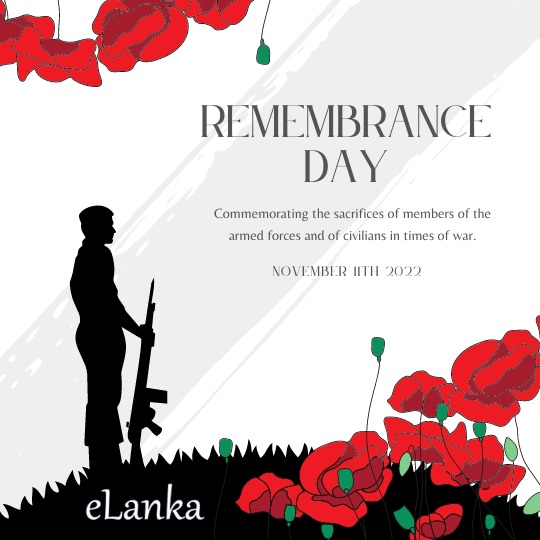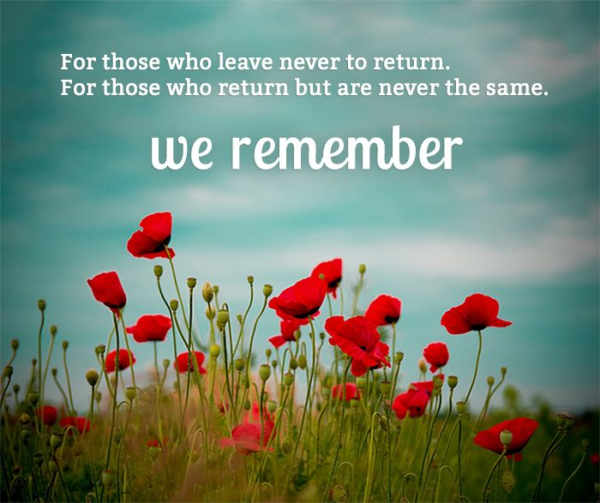ARMED FORCES REMEMBRANCE DAY AND POPPY CEREMONY – By Brig. Hiran N. Halangode

This year the Armed Forces Remembrance day and Poppy ceremony is due to be held on Sunday the 13th November 2022 at the Viharamahadevi park in Colombo. Since November is the month of Remembrance universally it is commemorated world over.
Each year on the 11th of November, Britain and the Commonwealth countries remember their war dead in a formal manner by laying Poppy wreaths at their respective national war memorials and war graves related to those fallen in battle or died while in service during the two World Wars. The signing of the Armistice was at 11.00 a.m. on 11th November 1918 with the end of World War 1. Hence this day is considered as the Remembrance day.
In Sri Lanka the ceremony is held annually with the support of the RCEL (Royal Commonwealth Ex-Services League) who donate a million poppies to the SLESA (Sri Lanka Ex Servicemens’ Association) which through its sale provides the financial assistance, medical aid and nourishment to the needy, ageing, infirm, and destitute Ex Servicemen. Sadly certain governments in the past taxed the donation of poppies and deprived the full benefit of the donation reaching the needy Ex Servicemen.
The SLESA with over 45,000 members at present provide financial assistance to its needy members for their medical requirements like spectacles, hearing aids, minor surgeries and scholarships for their children’s education. They also maintain two Homes for the aged in Bolagala off Negombo and another at Katugastota. The state sadly has neglected these veterans and hence the Poppy appeal is the main source of income for its members. The Poppy appeal is commemorated at the War Memorial on the nearest Sunday to 11th November by the Sri Lanka Ex Servicemens’ Association annually.
The War Memorial at the Viharamahadevi Park, Colombo consists of the Cenotaph(empty tomb) and its Memorial Wall (backdrop). The sole purposes of these two structures are as follows,
The Cenotaph is in remembrance of the fallen 442 volunteers of the estimated total of 1,250 volunteers from Sri Lanka (then Ceylon) who joined the British and Commonwealth forces to fight in World War I (1914-1918).
A significant achievement has been that 330 schoolboy cadets of 4 English speaking schools (Royal, St Thomas’, Kingswood and Trinity) went to Europe to fight in WW 1 where 45 of them were Killed in Action and many more were wounded and suffered mental and physical disorders later in life. These schoolboy cadets were inspired by their British principals and masters and volunteered to fight under the British Forces far away from home. They went together as Ceylonese and their sacrifice, selfless service in the defence of their motherland and volunteerism must be recorded for posterity and emulated by the present day youth for FREEDOM HAS A PRICE.
Despite the horrors of war and the reality of world affairs where the ebb and flow of life keeps changing, it is the attitude and will of the people of a country and its leaders that help in maintaining the freedom and peace in one’s motherland.
The Memorial Wall (backdrop) to the Cenotaph is in remembrance of the fallen 46 volunteers of the estimated total of 47,260 volunteers from Ceylon who joined the British and Commonwealth forces to fight in World War II (1939-1945). These volunteers have served on the ground, at sea and in the air as follows,

The British Army 6,000 (4,000 for overseas service and 2,000 for local service) Ceylon Defence Force (CDF) – 40,000,
Ceylon Royal Naval Volunteer Reserve (CRNVR) – 1,200,
Royal Air Force (RAF) – 60
These veterans were the pioneers of the present-day Sri Lanka Army, Sri Lanka Navy, and Sri Lanka Air Force. May their contribution of service, dedication and volunteerism be remembered forever.
Sir Edwin Lutyens, the architect, had told the Daily News representatives that there should be ‘nothing commercial’ about the memorial dedicated to ‘those who laid their lives in the cause of liberty.’
The foundation stone for the monument was laid by the Governor, Brigadier General Sir William Henry Manning on December 7th, 1921. The Column was constructed of the best Sholinghur (a district 30 miles north of Madras) granite 119 feet 6 inches in height and seven feet in diameter. The monument was declared open on 27th October 1923 by Governor Manning at 7.45 a.m. as per the Ceylon Daily News records. According to the newspaper account, huge blocks of stone each weighing from one to four tons that arrived from the ‘steamers’ from India, “were all hoisted into position, shaped and dressed by skilled Indian workmen.” Addressing the gathering on the day, Governor Manning who laid the foundation stone to this great monument of honour said, “it will bear witness to the part the men of Ceylon, both British and Ceylonese took in that great struggle and it will be enshrined in the memories of all those who rest in peace, where they fought and died.”
With the outbreak of the Second World War in 1939, it was decided that the Victory Column on the Galle Face esplanade would be a notable landmark to enemy aircraft and thus it had to be dismantled. After much deliberation, it was finally decided to erect it at its present location- then known as the Victoria Park.
Governor General of Ceylon, Lord Soulbury took the decision to add a backdrop of columns and plaques bearing the names of those who lost their lives between 1939 and 1945 in the Second World War. The Ceylon Daily News of 6th February 1952 headline announces: ‘War Memorial Completed’.
The war monument which is of archaeological value has been renovated by the Sri Lanka Ex-Servicemen’s Association (SLESA) with the assistance of the
Sri Lanka Navy. However, of late the Cenotaph has been neglected due to officialdom, indifference and lethargy on the part of those responsible. It sadly resembles a relic of our colonial past.
In most Commonwealth countries their war memorials are well maintained and reflect the thoughts and actions of the public of their country. The need of the hour is to honour our veterans who laid the foundation to protect our motherland in its hour of need and perpetuate their memories amongst our public. This will help in building the battered image of our Veterans and assist in developing the attitude and support of our public towards the servicemen who continue to sacrifice the best years of their lives in defence of our motherland.
As the late US President Theodore Roosevelt famously said in April 1910 thus,
“ It is not the critic who counts; not the man who points out how the strong man stumbles, or where the doer of deeds could have done them better. The credit belongs to the man who is actually in the arena, whose face is marred by dust and sweat and blood; who strives valiantly; who errs, who comes short again and again, because there is no effort without error and shortcoming; but who does actually strive to do the deeds; who knows great enthusiasms, the great devotions; who spends himself in a worthy cause; who at the best knows in the end the triumph of high achievement, and who at the worst, if he fails, at least fails while daring greatly, so that his place shall never be with those cold and timid souls who neither know victory nor defeat.”
Therefore it is imperative that the Armed Forces Remembrance day and Poppy ceremony is given due national recognition without any further delay because if we as a nation fail to be grateful to those who have sacrificed their lives in the defence of our motherland we will be embroiled in conflict in the future. However nations world over have not paid heed to the advice proffered by Winston Churchill the war time Prime Minister of Great Britain who said the following after WW 11.
“ Woe betide the leaders now perched on their dizzy pinnacles of triumph if they cast away at the conference table what the soldiers had won on a hundred bloodsoaked battlefields”.
The ‘remembrance poppy’ is an artificial flower worn in Commonwealth countries to commemorate their military personnel who died in war. Veterans’ associations exchange poppies for charitable donations used to give financial, social and emotional support to their members and veterans of the armed forces. The red poppy is a symbol of both Remembrance and hope for a peaceful future. Poppies are worn as a show of support for the Armed Forces community. The poppy is a well-known and well-established symbol, one that carries a wealth of history and meaning with it.
Brig. Hiran N. Halangode (retd) RWP RSP USP USACGSC







